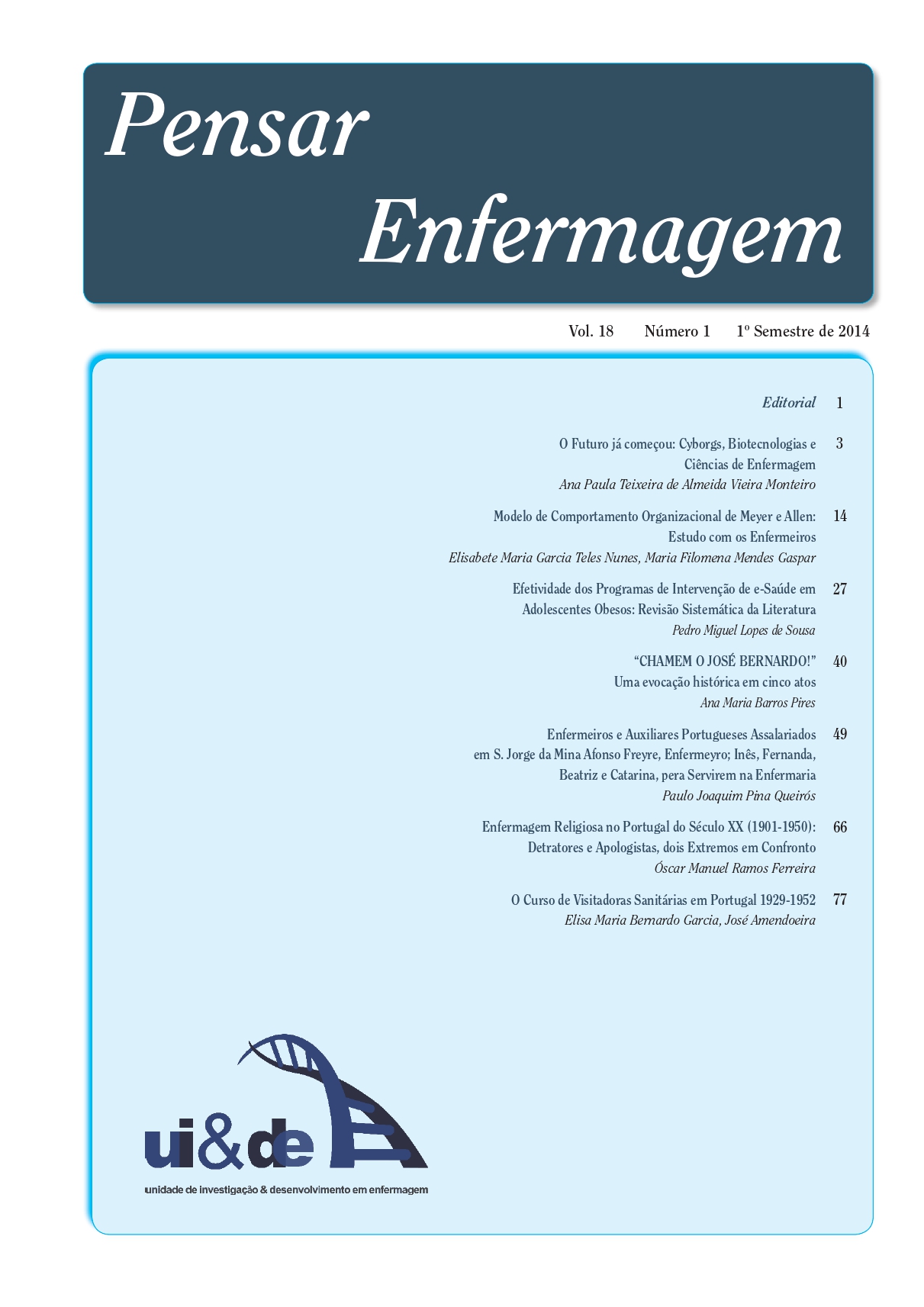Nurses and auxiliary portuguese employees in S. Jorge da Mina: Afonso Freyre, Enfermeyro; Inês, Fernanda, Beatriz e Catarina, pera servirem na enfermaria
Published 2014-10-01
Keywords
- Nursing,
- knowledge,
- history of nursing,
- nursing research (Source: DeCs)
How to Cite

This work is licensed under a Creative Commons Attribution 4.0 International License.
Abstract
Nurses with specific functions and employees may have arisen, in Portugal, in the context of the creation of major hospitals, linked to royal centralization and the overseas expansion. Find references to nurses and assistants in S. Jorge da Mina, the Guinea coast, in the passage of fifteenth century to the sixteenth century. We have reviewed the literature of historiography and documents, allowing focus on the following points: The expansion of the Mediterranean to the African Atlantic; S. Jorge da Mina, at the end of fifteenth century, a new space; Royal centralization in the second phase of expansion and control of welfare institutions; Gold, but also slaves, missionary and other treatment; Nurses in Mina, caring for the healing of the sick. The research raises us the following summary: The level of specialization and differentiation of health workers follows the creation and centralization of welfare institutions in large units. In Africa, in factory, castle-fortress, the organization of the health service is done with royal employees, in dedicated facilities and equipped wards with nurses and assistants. We know the name of the auxiliary and also the name of the nurse. We know how earned, the existing hierarchy, some materials and resources available and some of what they did.

